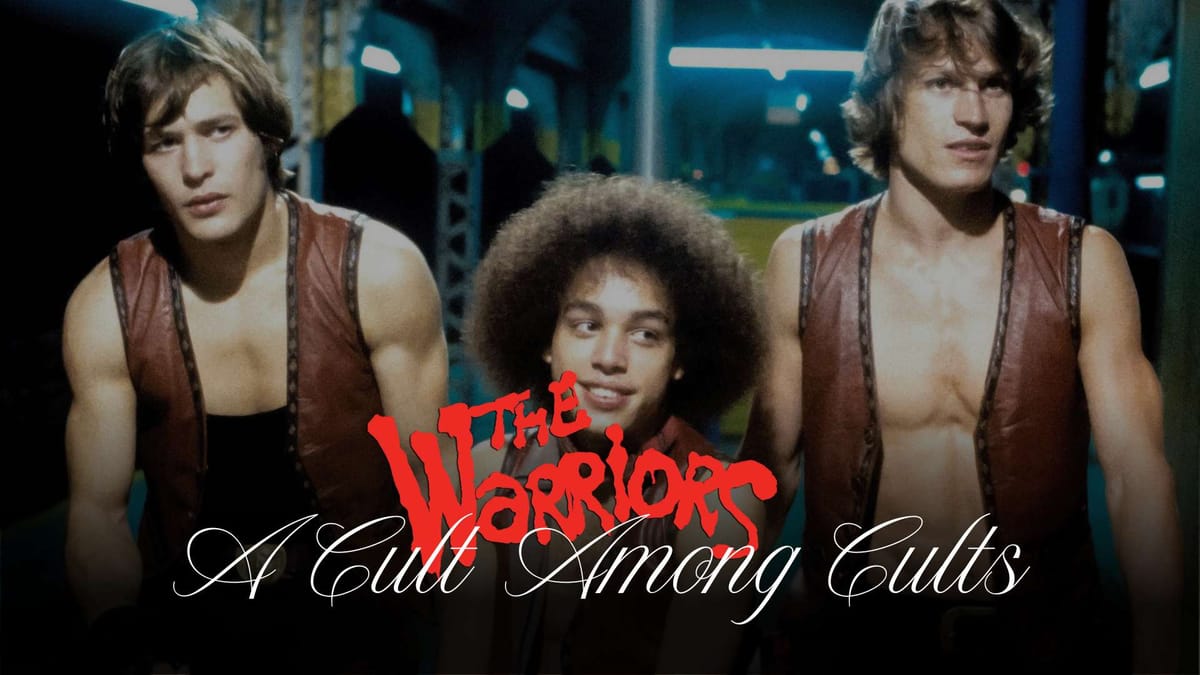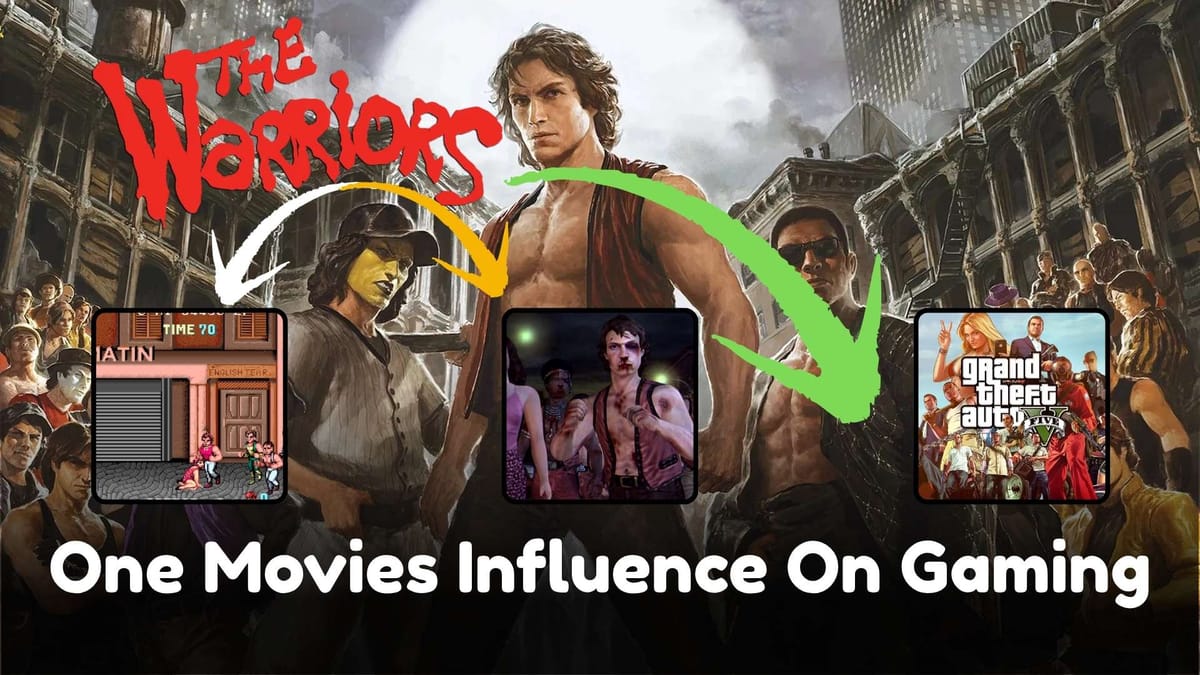I still remember the first time I realised Grand Theft Auto: San Andreas was basically The Warriors with cars. The gang territories, the spray-painting, the turf wars—it all clicked when I was replaying Rockstar’s 2005 Warriors game. What started as a simple observation became a fascinating rabbit hole into how one controversial film shaped nearly every major gaming genre we know today.
The Warriors didn’t just influence cinema. It accidentally became the DNA of modern gaming, spawning everything from beat-em-ups to open-world crime simulators. This isn’t just about one great game adaptation—it’s about how Walter Hill’s urban mythology created the template that developers are still following 45 years later.
The Accidental Genesis
The gaming revolution started almost immediately. In 1986, just seven years after the film’s release, Japanese developer Technos Japan created Nekketsu Kōha Kunio-kun—known in the West as Renegade.
The connection was explicit. According to gaming historians, Renegade was directly “inspired by the 1979 movie The Warriors.” The game’s urban setting, gang aesthetics, and street-fighting mechanics lifted wholesale from Hill’s vision of New York as a mythological battleground.
The Warriors Influence on Gaming
But Renegade was just the beginning. Its success led Technos to create Double Dragon in 1987, which became the foundation of the entire beat-em-up genre. Every Streets of Rage, Final Fight, and Teenage Mutant Ninja Turtles arcade game traces its lineage back to this chain:
The Warriors (1979) → Renegade (1986) → Double Dragon (1987) → Modern Gaming
Key Innovation: Renegade introduced the “belt scroll” format—allowing players to move both horizontally and vertically through urban environments. This became the standard for all future beat-em-ups.
Rockstar’s Gaming Masterpiece
When Rockstar Games decided to adapt The Warriors in 2005, they weren’t just making another film tie-in. They were creating what many consider the greatest movie-to-game adaptation ever made.
The numbers tell the story. The game grossed $37 million worldwide—more than three times the original film’s budget. Critics called it “the best game adaptation of a film ever in terms of capturing the mood of the original movie.”
What Made It Revolutionary
Rockstar Toronto faced a fundamental challenge: how do you stretch a 94-minute film into a full gaming experience? Their solution was brilliant—create a prequel.
Thirteen of the eighteen missions took place before the film’s events, showing how the Warriors formed as a gang. This wasn’t padding; it was world-building that enhanced the source material while giving players agency in the mythology.
The game mechanics perfectly captured the film’s essence:
- Territory control through spray-painting and turf wars
- Gang reputation systems that affected how enemies reacted
- Brawling combat that felt authentic to 1970s street fighting
- Cinematic presentation with comic book-style cutscenes
Most importantly, the original cast returned. Michael Beck, James Remar, Deborah Van Valkenburgh, and others reprised their roles, lending authenticity that film games rarely achieve.
The Beat-Em-Up Blueprint
The Warriors created the template every classic beat-em-up still follows:
- Small group with distinct fighting styles
- Journey through enemy territories
- Unique gangs with signature looks
- Escalating difficulty through “districts”
- Final boss confrontation
Streets of Rage, Final Fight, Teenage Mutant Ninja Turtles—they all use this exact structure. Even Streets of Rage 4 and Scott Pilgrim vs. The World: The Game follow the Warriors playbook decades later.
The aesthetic influence runs deeper. Colourful themed gangs, urban decay backdrops, synthesiser soundtracks—all trace back to Hill’s visual language.
Hip-Hop’s Gaming Bridge
When Wu-Tang Clan started sampling The Warriors extensively, they created a cultural pipeline between the film and urban gaming. This connection shaped Grand Theft Auto’s entire approach.
San Andreas (2004) featured:
- Territory control through gang wars
- Spray-painting mechanics for claiming turf
- Respect systems based on reputation
- Hip-hop soundtrack integration
The influence was mutual. When Rockstar made The Warriors game in 2005, they used techniques perfected in GTA. Classic beat-em-up action met modern open-world exploration.
Territory Control Goes Mainstream
Today’s biggest franchises use mechanics pioneered by this influence chain:
Territory systems appear everywhere—Far Cry’s outpost liberation, Assassin’s Creed’s district control, Cyberpunk 2077’s gang territories. Gang aesthetics define visual design across Saints Row, Watch Dogs, and Yakuza.
Saints Row IV features a complete Streets of Rage pastiche called “Saints of Rage.” It’s direct homage and evolution.
Walter Hill’s Accidental Revolution
Walter Hill never intended to influence gaming. His other films like The Driver and The Long Riders share similar themes, but The Warriors hit the perfect cultural moment.
Its comic book structure translated naturally to level-based progression. Visual storytelling suited interactive media. Most importantly, its mythological approach to urban conflict provided a framework adaptable across cultures and decades.
Modern gaming owes The Warriors a debt extending far beyond any single adaptation. From arcade beat-em-ups to massive open-world experiences, the template remains consistent: heroes fighting through hostile territory, claiming space through skill, proving worth against overwhelming odds.
Can you dig it? Millions of gamers have—whether they realise it or not. Every territory claimed in Grand Theft Auto, combo perfected in Streets of Rage, reputation built in Saints Row participates in a tradition starting with nine Warriors making their way home through urban night.
The Warriors didn’t just survive its controversial run—it created modern gaming’s genetic code. Not bad for a $4 million gang movie critics initially dismissed.
The Warriors: From Box Office Disaster to Cult Legend
A violent gang odyssey that critics dismissed became one of cinema’s most beloved cult classics. Join us as we Deep Dive into a cultural icon!

Sometimes the most unexpected influences prove the most enduring.
